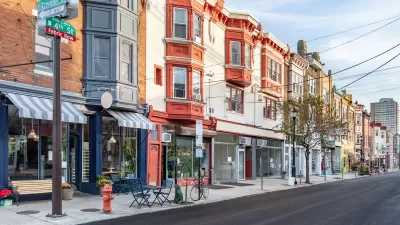The argument in the headline, put more specifically: inclusionary zoning, fees, legal challenges, and minimum apartment sizes are counter-productive. The only policy that will add housing stock, is to make it much cheaper to add housing stock.

Dan Bertolet chooses a side in an ongoing debate about the causes of the nation's housing crisis—specifically, the reasons why the cost of housing is so high in so many places around the country.
Few public policy issues can match urban housing politics for its incendiary combination of passion and misconception. To wit: the confounding idea that relaxing regulations and fees to decrease the cost of homebuilding won’t make homes more affordable.
So on one side, there is the familiar argument that land use regulations, fees, and red tape don't have much influence on the price of housing, because "developers charge as much as the 'market will bear' anyway. Any savings from streamlined regulations or reduced fees just yield more profit for the developer, not lower prices or rents."
According to Bertolet, that line of reasoning excuses counter-productive housing policy, and is often used to propose more costs for developers. Bertolet is choosing the other side of this debate: that red tape and fees add to the cost of housing, and that to add the level of housing stock necessary to lower the cost of housing, red tape and fees should be removed as mush as possible. Bertolet goes into a lot more detail to make his case, while discussing examples like inclusionary zoning and acknowledging that his opinion is not popular among urban planners.
FULL STORY: YES, RED TAPE AND FEES DO RAISE THE PRICE OF HOUSING

Planetizen Federal Action Tracker
A weekly monitor of how Trump’s orders and actions are impacting planners and planning in America.

Maui's Vacation Rental Debate Turns Ugly
Verbal attacks, misinformation campaigns and fistfights plague a high-stakes debate to convert thousands of vacation rentals into long-term housing.

San Francisco Suspends Traffic Calming Amidst Record Deaths
Citing “a challenging fiscal landscape,” the city will cease the program on the heels of 42 traffic deaths, including 24 pedestrians.

Defunct Pittsburgh Power Plant to Become Residential Tower
A decommissioned steam heat plant will be redeveloped into almost 100 affordable housing units.

Trump Prompts Restructuring of Transportation Research Board in “Unprecedented Overreach”
The TRB has eliminated more than half of its committees including those focused on climate, equity, and cities.

Amtrak Rolls Out New Orleans to Alabama “Mardi Gras” Train
The new service will operate morning and evening departures between Mobile and New Orleans.
Urban Design for Planners 1: Software Tools
This six-course series explores essential urban design concepts using open source software and equips planners with the tools they need to participate fully in the urban design process.
Planning for Universal Design
Learn the tools for implementing Universal Design in planning regulations.
Heyer Gruel & Associates PA
JM Goldson LLC
Custer County Colorado
City of Camden Redevelopment Agency
City of Astoria
Transportation Research & Education Center (TREC) at Portland State University
Jefferson Parish Government
Camden Redevelopment Agency
City of Claremont





























